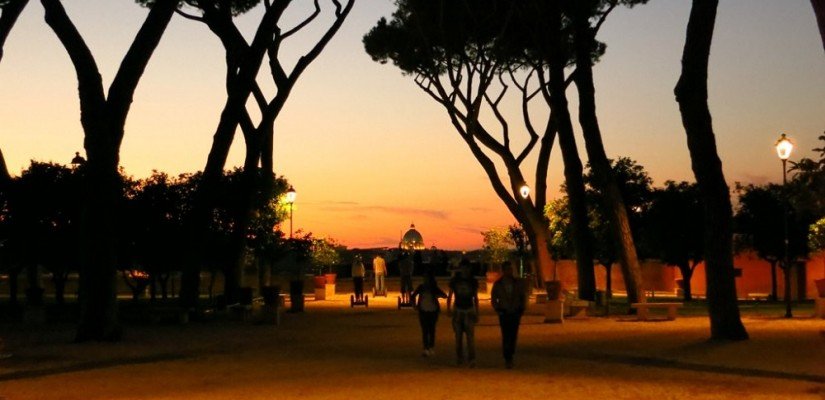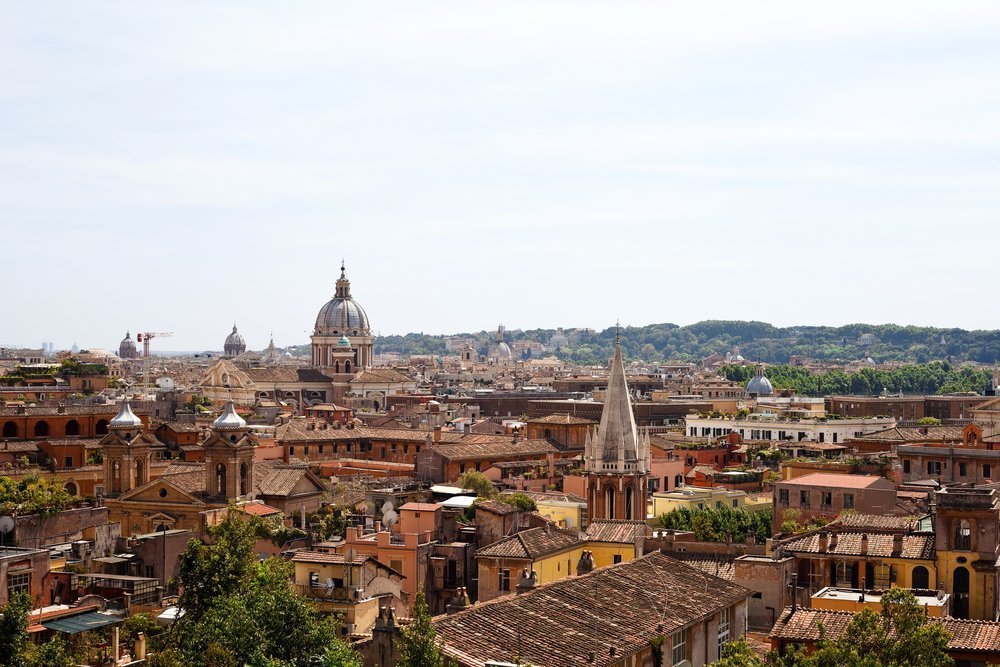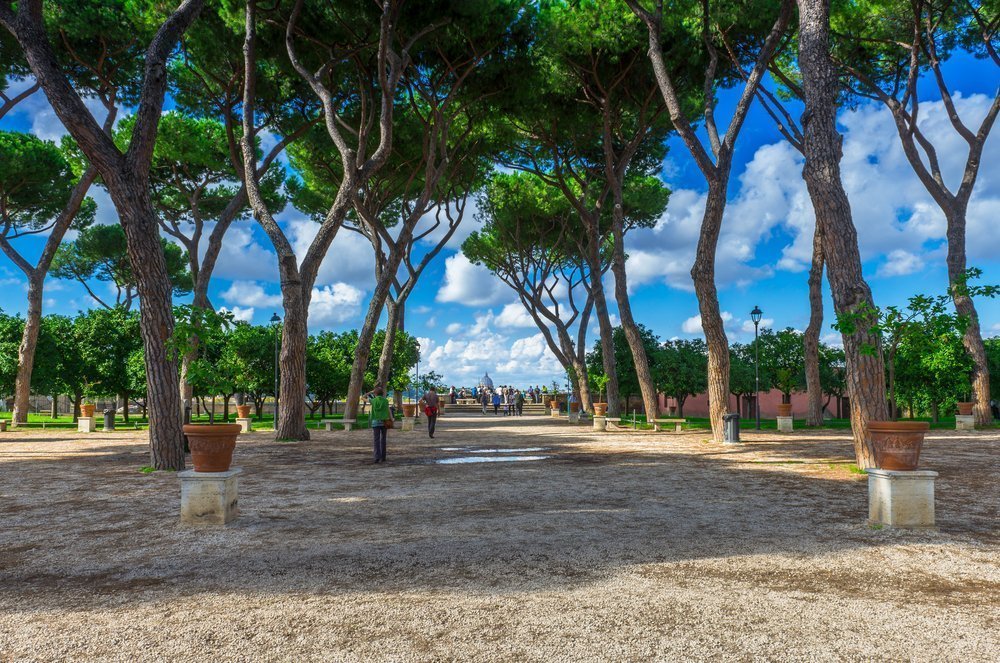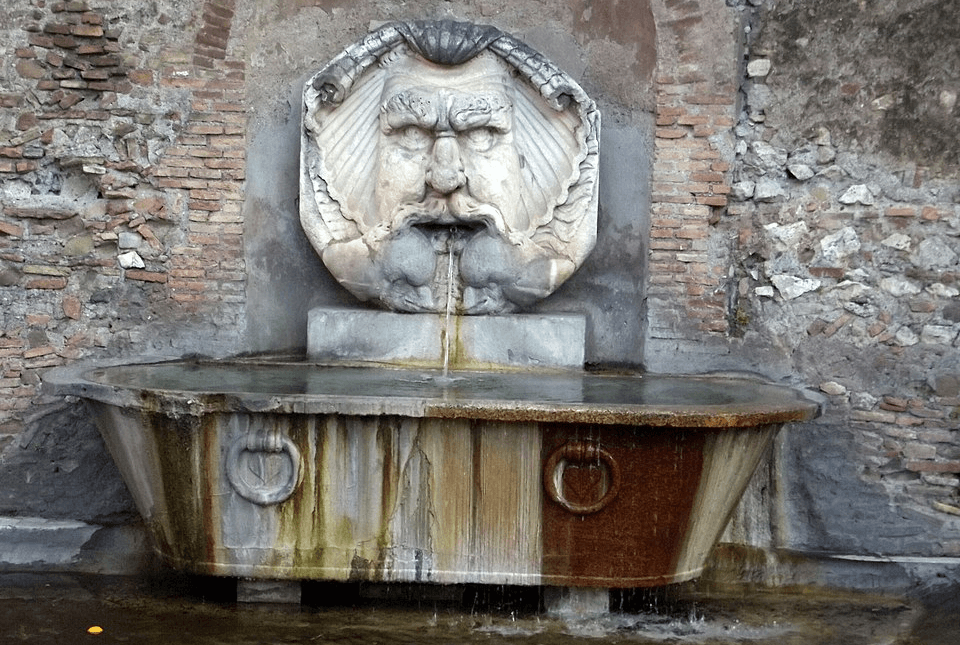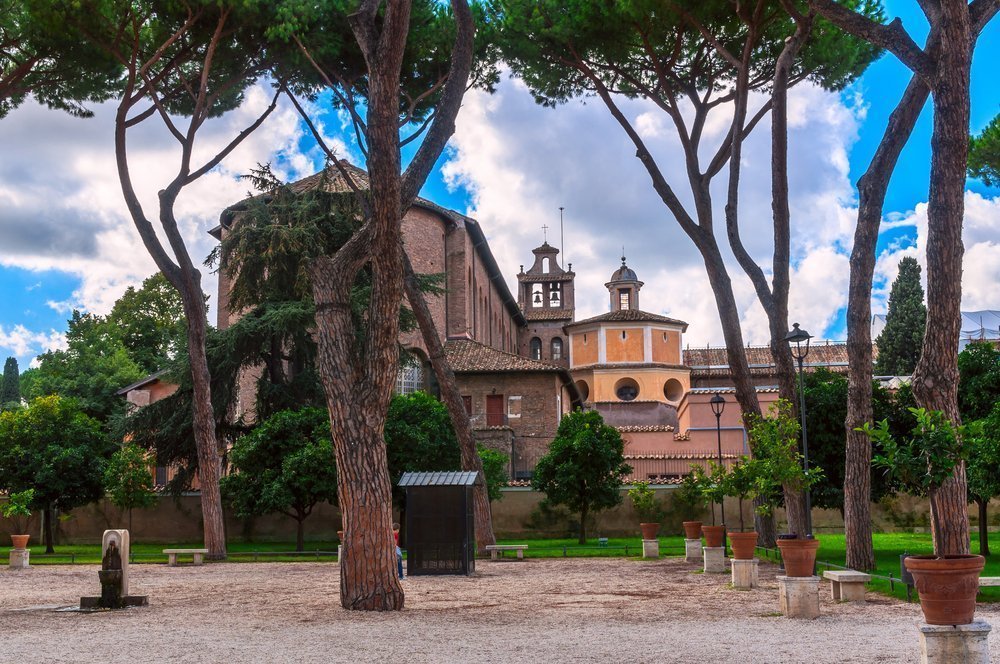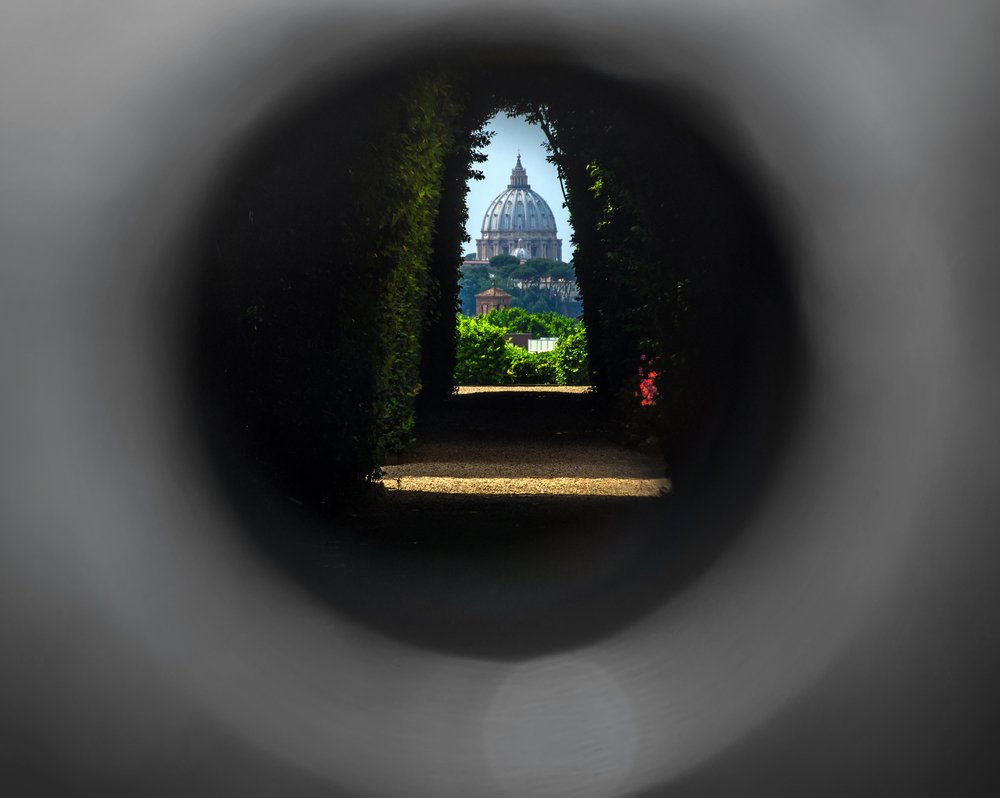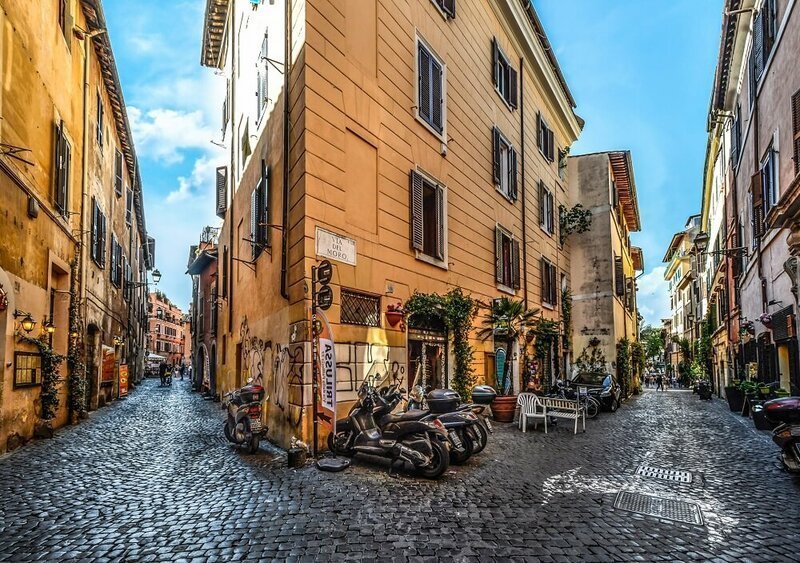Perched just above the river on the Aventine Hill, the Orange Garden of Rome is one of the city’s most beloved natural areas. This beautiful park covers almost 8,000 square meters and offers a panorama over Rome matched only by the Janiculum Hill.
Walks Inside Rome has written this post to guide you through the garden, sharing its history and suggesting what to see.
The Orange Garden’s Name
Because this land fell under the ownership of the Savelli family at the end of the 1200s, the Orange Garden’s real name is the Savello Garden.
The Savelli were one of the most powerful aristocratic families in Rome. On a par with the Borgia family (though far less infamous) they produced at least two popes and owned property throughout the region.
In Rome, they fortified the Aventine Hill, on which the Orange Garden stands, around the 13th and 14th century. Outside the city, they fortified Castel Gandolfo, now home to the Pope’s summer residence.
Locals today wouldn’t recognize the name Savello Park. They know this area as the Orange Gardens (giardini degli aranci) because of the abundance of bitter oranges it bears.
The Garden’s First Oranges
Local legend credits Saint Dominic (1170 – 1221) with planting the garden’s first orange tree.
Born in the Spanish city of Castille, Dominic came to Rome seeking papal approval to found his newly flourishing Dominican Order. While traveling here, he carried an orange sapling, which he later planted on this site.
Another local legend cites the Orange Garden as the source of Rome’s first 14th-century candy. Apparently, Saint Catherine of Siena used to come here to make candied oranges, which she gave as gifts to the grateful Pope Urban VI, whose cause she championed in the Great Western Schism.
The Garden
The Orange Garden as you see it now was completed in 1932 on the design of Italian architect Raffaele De Vico.
Enclosed between Rome’s medieval city walls, built by the architect Domenico Fontana for Pope Sixtus V, the symmetrical plan was devised to give anyone looking out from the balcony the best possible view of the Vatican.
The center of the Orange Garden consists of a wide avenue lined by two planted squares. In one of them stands a monumental fountain.
The Park has three entrances, but the main one is the Square of Pietro D’Illiria. The other two were only added in 1937.
The Fountain
The fountain at the Orange Garden’s entrance on Piazza Pietro D’Illira tells a particularly interesting story. Looking at it, you wouldn’t know which of its two parts are older – the marble head or the bathtub into which its water runs.
The answer is in fact the bathtub, which was originally installed in one of the ancient city’s thermal baths. The mask has an interesting story too. Carved to decorate a fountain designed in 1593, it moved from the old cattle market in the Roman Forum before being moved in 1827 century to adorn a fountain along the Tiber.
Finally, just 63 years later, the marble mask was moved again and stored in a municipal warehouse before being installed in its present location on the Aventine.
The Fortress
Few visitors to the Orange Garden realize they are walking above a medieval fortress. But beneath its lawns and pathways lie the remains of a fortress and ramparts built by the Savelli family.
If you come up here expecting to stumble upon a medieval castle, prepare to be disappointed. There are only a few barns and warehouses underground as everything else was demolished in 1613.
The Keyhole
Turn right as you leave the Orange Garden and you’ll stumble across one of Rome’s best-kept secrets.
Just outside the Priory of the Knights of Malta is an inconspicuous iron gate. Peep through its keyhole, however, and you’ll be treated to a unique view of Saint Peter’s Basilica peaking through the hedges.

